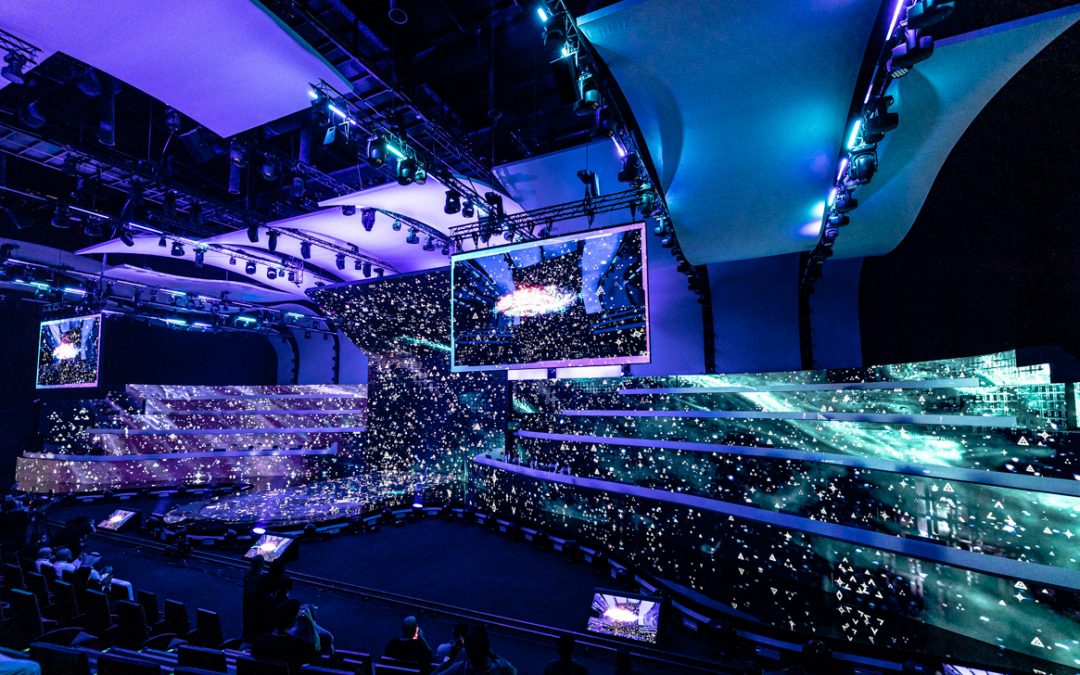In today’s dynamic events landscape, organizers are continually seeking cutting-edge technologies to deliver extraordinary and unforgettable experiences. Holographic technology has emerged as a game-changing innovation, transforming events into immersive and awe-inspiring spectacles. In this article, we will explore the impact of holographic technology on events, diving into the technical aspects that make these captivating spatial interactions possible.
How Holographic Technology Works in Events
Holographic technology utilizes advanced optics, light projection, and content creation techniques to generate 3D images that appear to be floating in mid-air. The technology involves two main components:
1. Holographic Display System: The core of the holographic experience is the display system, which comprises a transparent screen or surface onto which images are projected. There are different types of holographic displays, such as large-scale projection systems, pyramid-shaped holographic displays, and even holographic projections onto water-based screens. These displays are carefully designed to ensure maximum visibility and clarity of the holographic content.
2. Content Creation and Synchronization: Creating holographic content requires precision and expertise. Specialized 3D modeling software is used to design and animate lifelike holographic images. The content must be synchronized precisely with the display system to ensure that the holographic objects align seamlessly with the physical environment. This synchronization is critical in creating believable and immersive experiences.
Real Examples of Holographic Technology in Events
1. Live Holographic Performances: One of the most spectacular applications of holographic technology is bringing deceased musicians back to life on stage. Companies have recreated iconic performances by artists like Michael Jackson and Tupac Shakur as holograms. To achieve this, meticulous motion-capture techniques are used to replicate the artists’ movements and expressions, resulting in eerily realistic live holographic performances.
2. Interactive Product Showcases: Brands leverage holographic technology to showcase their products in captivating ways. For instance, a luxury car manufacturer could project a holographic 3D model of their latest vehicle, allowing attendees to explore its features virtually. This interactive product showcase creates a lasting impression, immersing potential customers in the brand experience.
3. Holographic Storytelling Experiences: Holographic technology enables event organizers to craft compelling and interactive narratives. For example, during a medical conference, a holographic display can guide attendees through a virtual tour of the human body, highlighting the impact of medical advancements on patient care. This interactive storytelling approach increases engagement and enhances the understanding of complex subjects.
Technical Considerations for Implementing Holographic Technology
1. Venue Setup and Lighting: Creating an optimal environment for holographic displays is crucial. Adequate lighting conditions, along with careful consideration of the venue’s layout, are essential to ensure the best visual impact. Ambient lighting must be controlled to prevent interference with the holographic projections.
2. Content Calibration and Alignment: Precise calibration and alignment of the holographic content with the display system are critical for a seamless and realistic experience. Expert technicians use specialized software and hardware tools to ensure perfect synchronization.
3. Interactivity Integration: Incorporating interactive elements enhances the engagement of the holographic experience. Integrating gesture recognition, motion sensors, or touch interfaces allows attendees to interact with the holographic content, creating a more immersive and personalized encounter.
Conclusion
Holographic technology has brought a new dimension of engagement to the events industry. Through advanced optics, content synchronization, and interactive features, holographic displays transport attendees to realms previously limited to science fiction. From resurrecting legendary artists on stage to showcasing products in captivating ways, holographic technology continues to push the boundaries of audience interaction and experience. As this technology evolves, it holds the promise of even more breathtaking and imaginative applications, further revolutionizing the events landscape and leaving audiences in awe.
FAQs
Q: How does holographic technology work in events?
A: Holographic technology uses a combination of light, optics, and projection techniques to create 3D images that appear to be floating in space. It involves projecting light onto a transparent screen or surface, creating the illusion of three-dimensional objects or characters. Advanced holographic displays can also incorporate interactive elements, allowing real-time engagement with the holographic content.
Q: What types of events can benefit from holographic technology?
A: Holographic technology can enhance a wide range of events, including conferences, trade shows, product launches, concerts, educational exhibitions, and corporate gatherings. Any event that aims to leave a lasting impact on attendees and wants to offer a unique and memorable experience can benefit from incorporating holographic displays.
Q: What are the trends and future prospects of holographic technology in the events industry?
A: The holographic technology in the events industry is continuously evolving. As the technology becomes more accessible and affordable, we can expect to see its wider adoption across different event types and scales. Advancements in holographic displays, content creation techniques, and interactivity features will open up new possibilities for even more immersive and engaging experiences in the future.
Q: Is holographic technology expensive to implement in events?
A: The cost of implementing holographic technology can vary depending on the complexity of the setup, the size of the holographic displays, and the content creation requirements. While some high-end holographic solutions can be expensive, there are more affordable options available in the market that can still deliver impressive results. The return on investment often justifies the cost, as holographic displays can significantly elevate the event’s overall appeal and engagement levels.

